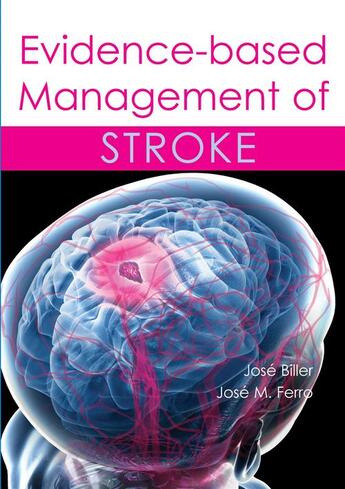Des idées de lecture pour ce début d'année !
Passionné(e) de lecture ? Inscrivez-vous
gratuitement ou connectez-vous pour rejoindre la
communauté et bénéficier de toutes les fonctionnalités du site !

Winner of a HIGHLY COMMENDED AWARD in the Neurology category of the 2012 BMA Medical Book Competition. More than five million people die from stroke each year. Stroke is also the leading cause of adult disability, affecting over 20 million people worldwide, with two-thirds of stroke victims left permanently disabled. We now know that speed of intervention is critical and patient outcomes are determined by a very narrow therapeutic window, during which physicians need to be able to make their choice of treatment rapidly, based on the best evidence available. The purpose of this book is to review that evidence, for both medical and surgical therapies as well as preventative strategies, drawing on the expertise of leading international authorities to distinguish the issues for which there is a consensus on best practice from those for which the evidence remains inconclusive. For example, for patients with acute ischemic stroke the first choice is intravenous thrombolytic therapy, but does a treatment window of 0-3 hours deliver outcomes significantly better than one of 3-4.5 hours? Arterial hypertension is the single most important modifiable risk factor for ischemic stroke, but what are the effects of blood pressure reduction among acute stroke patients? How effective is blood pressure lowering in primary intracerebral hemorrhage? What are the arguments in favour of continuation versus temporary discontinuation of antihypertensive therapy immediately after acute ischemic stroke? Endovascular procedures (carotid angioplasty/stenting) are increasingly important but what do the data tell us about their safety? Or durability? How do they compare with carotid endarterectomy? The management of unruptured intracranial aneurysms is rife with controversies; clip, coil, wait and watch? The authors examine the evidence for and against. Other sections examine the impact of various risk factors, and special populations. A section on stroke after cardiovascular surgeries reviews the incidence and management of stroke following a whole range of procedures. Another examines special risks during pregnancy. Lastly, the book reviews our understanding of childhood stroke and presents current best practice recommendations for this most challenging group of patients.
Il n'y a pas encore de discussion sur ce livre
Soyez le premier à en lancer une !

Des idées de lecture pour ce début d'année !

Si certaines sont impressionnantes et effrayantes, d'autres sont drôles et rassurantes !

A gagner : la BD jeunesse adaptée du classique de Mary Shelley !

Caraïbes, 1492. "Ce sont ceux qui ont posé le pied sur ces terres qui ont amené la barbarie, la torture, la cruauté, la destruction des lieux, la mort..."